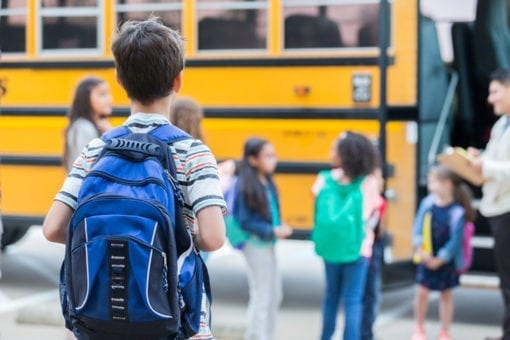Updated on 05/20/24
Summer is ending which means back to the classrooms for teachers and school-aged children. After having the summer off, sitting in a classroom for hours and abiding by a strict schedule can be stressful and a difficult adjustment for many. Teachers and parents most likely agree that the first couple of weeks of school is the most difficult to adjust. Teachers play a major role in promoting a mentally and physically healthy classroom environment for students of all ages. Below are tips and tricks that teachers can adopt in order for schoolchildren to be mentally stimulated in the classroom
Provide access to drinking water and adequate bathroom breaks
Allowing students to carry water bottles in class and visit the drinking fountain frequently not only keeps them hydrated but also helps curb cravings for sugary drinks such as juices and sodas. Dehydration can result in headaches and other physical ailments, which may impede cognitive levels in the classroom.
Create a physically active classroom
Although this may take some creativity, engaging students in movement skills during the learning process can help keep them mentally stimulated. Maybe have the option of standing desks, or beanbag chairs or encourage students to stand up and write their answers on the whiteboard. Physical movement in the classroom and changing physical positions while in the classroom can help with the learning process.
Do not use physical activities as punishment
Whether it is running laps, standing in a corner, doing jumping jacks, or excluding kids from recess or playtime; do not use physical activity as a punishment as physical activity should be incorporated into the daily learning process and should be used as positive reinforcement. Allowing students 20 minutes of recess multiple times a day can help improve their concentration, reduce physical aggression and curb behavioral outbursts.
Watch Out for Student Weight Concerns and Stigma
Refer students with signs of eating disorders or weight concerns to the appropriate professional and intervene on bullying including weight discrimination or teasing. Individuals with eating disorders such as bulimia nervosa, binge eating disorder, and anorexia nervosa usually display signs and symptoms around 13-14 years of age however children as young as 8-year-old have been known to have signs and symptoms associated with eating disorders. Bullying whether it is physical altercations or verbal abuse can occur at all ages and usually occurs away from teachers and adults. Many mental health advocates and psychologist advise teachers to take a course on mental health disorders and eating disorders so they can become aware of the signs and symptoms.
Eliminate food as a reward/punishment
Children are at risk of associating food with emotions and feelings of accomplishment when food is used in the classroom as a reward. Whether it is candy or a sugary treat, foods should not be used as a reward or as a punishment. Meals and snack times should never be taken away as a punishment. This reinforces the practice of eating outside of meal or snack times and encourages students to eat treats even when they are not hungry. This practice may create lifetime habits of rewarding or comforting oneself with unhealthy eating which can lead to emotional eating that is closely linked with many eating disorders.
Be a role model
Your students are taking mental notes of what you eat and drink and how you act. Drink water instead of soda and try to eat healthy food when you are around your students. When you are planning a school party, kindly ask the parents to avoid sugary treats and drinks and speak with your principal about potentially educating your students on bullying and safety.
